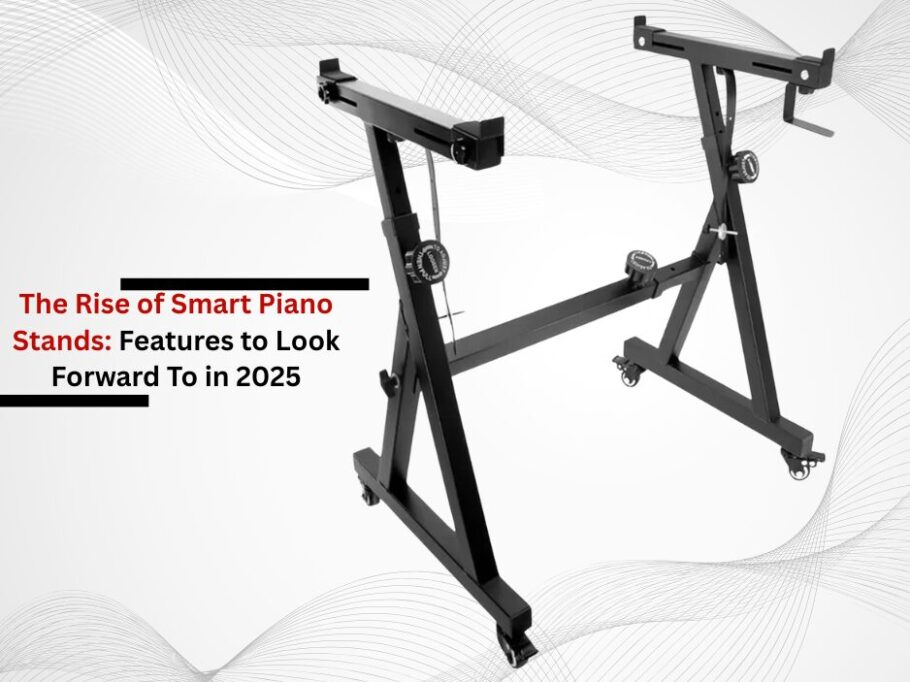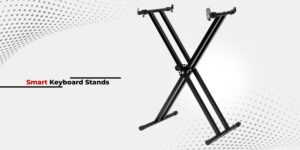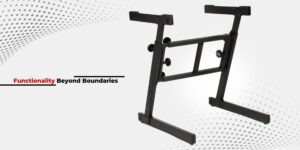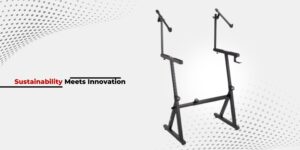These days, a piano stand is not entertainment. It is a partner for musicians. The musician is no longer a sole developer of the piece; now they have evolving technology aid at their side, ready to partner with them. Musicians are now free to create and style music without any boundaries or restrictions. Stands today do more than just hold pianos; they have transformed into AI-powered SAPs that “shout” for attention with their endless ingenuity while keeping in sync with ecosystems. It’s no longer a piece to be ignored; it’s a supporter to help build an extraordinary masterpiece. Today, we’ll dive deeper and explore how smart keyboard stands rose through the scene and what the features are.
What are Smart Keyboard Stands?
Smart Keyboard Stands are reliable supports meant to use technology to exploit musical artistry and performance to a new level. They are different from classic stands because of their additional features of information technology and sensor network engineering used to monitor peripheral factors like humidity and adjust settings to safeguard instruments. They are ergonomically adaptive and automatically height/tilt to the ideal playing position. Modular parts for tablets, mixers, or light controls, as well as AI-powered analytics that monitor techniques in real time, make these stands an important eco-friendly instrument.
They also serve as communication hubs using wireless connections, which allow sync with digital tools, transforming the workstation into a creative center. The stands successfully combine robustness, intelligence, and environmental sustainability that exploit passive supports into active partners in music creation.
Flexible Design: Functionality Beyond Boundaries
Creative Flexibility in Modular Ecosystems:
The innovative, multidimensional piano stands of the present allow for customization unlike ever before. In 2025, performers will have complete freedom to create whatever design they want. Piano stands now enable artists to customize setups in seconds by incorporating components such as tablets, microphones, or even controllers. Need a laptop mount for live looping? Snap it on. Slide it right on if it’s a synth module you’re incorporating. These designs provide the right support for improvisational jazz, electronic composition, and classical playing. Every setup is unique to the musician.
Intelligent Assistance at Your Fingertips:
Instruments are often at risk of being damaged, and advanced sensor networks assist in simplifying these issues by quietly monitoring conditions such as humidity and temperature. These advanced systems analyze playing habits alongside AI-powered software, enhancing the playing experience and aiding musicians with posture corrections and warm-up routines. A few of these keyboard stands even auto-adjust tilt and height mid-performance, giving musicians the aid that they need during their practice sessions.
The Invisible Conductor: Technology Integration
Seamless Digital Synchronization:
The focus of a digital workflow in contemporary keyboard stands is peripherals. Speakers, mixers, and smart-lighting systems can be connected via Bluetooth 6.0 and NFC with ease. Imagine a stand that begins soundscapes with a simple tap or dims studio lights as you begin recording. Their cloud compatibility allows setups to be stored and accessed on numerous devices, granting users the ability to travel freely from home studios to concert halls without losing access to their personalized configurations.
Data-Driven Insights for Artistic Development:
The algorithms in machine learning can review a video of a performance and analyze data to the extent of recognizing the tempo, dynamics, and even the emotions expressed during the performance. These pieces of information are sent to users through companion apps implementing a visual representation of progress or suggesting improvements with displayed areas of insufficient performance. For educators, this means feedback that can be acted upon; for performers, a journey to mastery.
Sustainability Meets Innovation
Balance Eco-Friendly Strategies with Performance:
Designs for 2025 have an eco-friendly element. Recycled aerospace aluminum, biodegradable polymers, and plant-based composites are plastics and steel. Non-slip matte surfaces from mushroom mycelium and corky waste also help the environment. These materials are tough, enduring harsh touring schedules, eco-values, and sustainability alignment flexed simultaneously.
Energy Efficient:
The solar-reactive coatings placed on the piano stands capture ambient light to energize charging pads. Devices are also powered by radio waves. Smart features on microprocessors are also energy-conserving, and even the packaging has been transformed, making it easier to toss into a compost pile after use.
Conclusion
The 2025 piano stand has transformed from a passive accessory to an active participant in the creative process. These stands integrate advanced technology, ergonomic design, and eco-friendly construction to fully integrate the musician and instrument, transforming rigidity into fluidity. AI-integrated smart piano stands are developed by pioneers such as 5 Core, K&M, Roland, and Chromecast, which offer wireless integration for contemporary studios. As the industry changes, one fact becomes evident: artistic expression will be defined not just by the melody but by how the music is enhanced.




